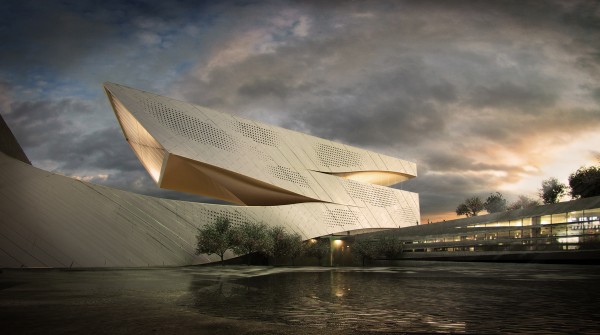Your kids will never outgrow this drawing desk — from Gizmodo.com by Andrew Liszewski
.
20 things educators need to know about learning spaces — from newsroom.opencolleges.edu.au by Miriam Clifford
Excerpt:
The 21stcentury is challenging old notions of learning spaces.
The idea that students must be seated at desks working in rows is quickly becoming archaic. Technology and collaborative work environments are changing the design of learning spaces. Experts hope that the emerging paradigm will translate into improved learning spaces and influence future architectural design.
Stephen Heppell and expert panelists recently spoke in Australia about physical spaces in The changing face of Education. Heppell, an international expert in the fields of learning, new media and technology, is known for his “eyes on the horizon, feet on the ground philosophy”.
He has moved countless organizations into the digital age.
From Library learning spaces as curated by Anne Whisken
Design, creation & management of library learning spaces.
.
Modern Architecture: Dalian Public Library by 10 Design, Dalian, China
 |
| Modern Architecture: Dalian Public Library by 10 Design, Dalian, China © 10 Design |
.
Welcome to the ‘Hive’: Harvard’s new classroom — from CLO by Frank Kalman
Harvard Business School’s recently launched “Hive” classroom is fit to equip learners with three modern components to business leadership: teamwork, collaboration and flexibility.
.
The classroom in 2020 — from Forbes.com by George Kembel
The next decade will bring an end to school as we know it.

.
Reconceptualising the School Library as Collaborative Makerspace | Services to Schools
Collaborative teaching: What might it look like?
Herman Miller and Nemschoff Step in the right direction — from media.designerpages.com by Joseph Starr
Excerpt:
Manufacturing giant Herman Miller and healthcare furnishings subsidiary Nemschoff continue to make great strides in the venue with Steps, a modular seating solution designed to take the edge off—as it were—of the sometimes harsh appearance of the healthcare environment.
4 spaces of learning – raising my awareness — from The Learning Activist blog by Mark Burgess at the Northern Beaches Christian School in Sydney Australia
Similar to the way cafes attract people — from Mark Burgess
.
Benefits of Flexible Learning Spaces #1 Teaching in Teams
.
Google releases software framework for building interactive experiences in physical spaces — from archdaily.com by Alison Furuto